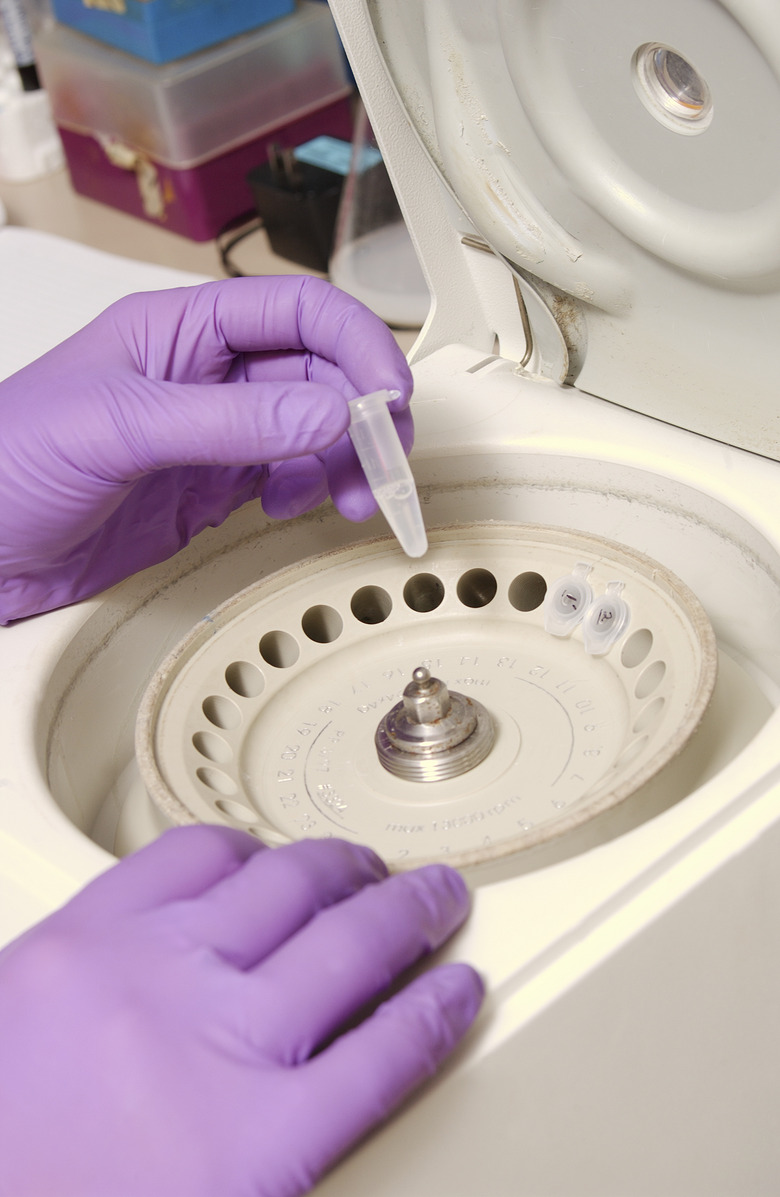How To Use A Centrifuge
Labs are full of equipment that no-one knows instinctively how to use. Instead of blithely opening up a centrifuge, tossing in your samples and pressing the "on" button, you need to know the basic rules of lab safety. The centrifuge operates at such high speeds that incorrect use can create a serious hazard.
User's Manual
User's Manual
Lots of different manufacturers make centrifuges. Each one is different and each one has specific usage instructions. Your institution may provide you with an operating protocol that you should follow exactly, but if you do not have a protocol, then you should follow the manufacturer's instructions.
Security
Security
Place the centrifuge in a secure place. It should not be in any danger of being knocked off a table, or pulled off by a person tripping over a loose cord. The centrifuge also has to be on a flat, sturdy surface so the vibration it creates when it is running is kept to a minimum. If the machine wobbles excessively, turn it off immediately in case it is malfunctioning or badly loaded.
Loading
Loading
Balance the load. If you have only one sample, for example, load another tube on the other side directly opposite the sample that has an equivalent load in it. It is important to balance it by mass, instead of simply by volume, as is recommended by Stanford University's centrifuge usage tips. If the sample is more dense than water, for example, you have to compensate by adding more density or volume to the balancing tube.
Opening and Closing
Opening and Closing
Ensure that the lid is properly closed when you finish loading the centrifuge. In addition, never open a centrifuge when it is operating, because even though the machine may turn off, the residual energy can continue to spin the samples at a high speed and the samples, or even the rotor itself, if it is broken, can fly off at dangerous speeds.
References
Cite This Article
MLA
O'Keeffe, Jillian. "How To Use A Centrifuge" sciencing.com, https://www.sciencing.com/how-to-use-a-centrifuge-12753861/. 10 September 2013.
APA
O'Keeffe, Jillian. (2013, September 10). How To Use A Centrifuge. sciencing.com. Retrieved from https://www.sciencing.com/how-to-use-a-centrifuge-12753861/
Chicago
O'Keeffe, Jillian. How To Use A Centrifuge last modified March 24, 2022. https://www.sciencing.com/how-to-use-a-centrifuge-12753861/
